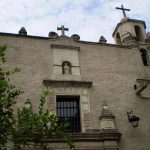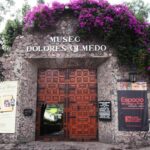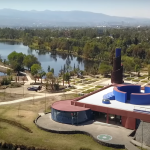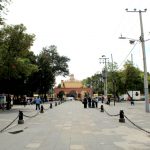
The Huichapan Light Rail station is one of the stops on the Xochimilco line. The station is most often used for access to Santa Cruz Xochitepec, some ten minutes to the west by taxi. A little closer is the giant Panteón Xilotepec. Also spelled Jilotepec, it’s the biggest cemetery in Xochimilco, and the site of the best-known and attended Day of the Dead observations in this part of the City.
The station name comes from the neighborhood that came to be in the 20th century. That makes it very young by Xochimilco standards. It likely borrows it’s name from the “pueblo magico” of San Mateo Huichapan in the state of Hidalgo. The Nahuatl name translates as “willows on the water” or “river of willows.” The trees, sauces in Spanish, make up the station logo. Founded in 1532 by the Spanish, Huichapan grew into something of an 18th-century spa town, surrounded as it is by hot springs. The historical “temazcales,” or steam baths in this part of Xochimilco may explain the adoption of the name for the modern Xochimilco neighborhood.
The Huichapan Light Rail is the only station on the line with platforms in entirely different neighborhoods. The photo above can only show one platform. The Xochimilco-bound side is technically in the Tierra Nueva neighborhood. The colonia Huichapan proper, on both sides of the track, hosts the Tasqueña-bound platform. The distance between the two platforms is some 82 meters.

Nearest at 0.23 kms.

Nearest at 0.69 kms.

Nearest at 0.74 kms.

One of Xochimilco's most legendary and mysterious lagoons . . .

A station named for the most famous resident of San Marcos Tlaltepetlalpan, Xochimilco.

A museum to celebrate the diversity of Xochimilco's famous eco-systems.

A giant plaza and open-air forum in the very center of ancient Xochimilco.

One of the oldest houses in Mexico City, and a unique take on Xochimilco...